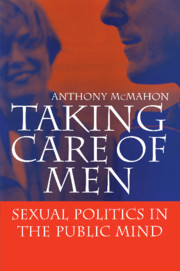Introduction: Changing Men?
Published online by Cambridge University Press: 05 October 2010
Summary
In September 1997, following the death of Diana, Princess of Wales, Prince Charles and his sons stood in front of the vast wall of flowers which the grieving public had placed outside Kensington Palace. This was a very public moment, and a very political one. Charles’ reputation as a father had not been good. Two years earlier the popular commentator Polly Toynbee had described Charles as the ‘archetypal father of his generation – the failed New Man’:
Philip was playing squash when Charles was born, but Charles was in at his son's birth, and it made him feel ‘grown up’, he told the cameras. Watching a birth is easy, it's the rest that eludes them. Charles, introspective, sensitive, yearning to do better than his own father, has failed too. Sons in boarding school, himself absent most of the time, he looks stiff and awkward with them in public
(Independent, 10 June 1995).With their mother gone the boys were in their father's care, at a time of extreme emotion, and under intense public scrutiny. The Daily Mirror told its readers that Charles must be a loving father, ‘one in a million’, its opinion based on a widely reproduced press photo that showed Charles and Harry holding hands as they gazed at the floral tributes to Harry's mother. After all, ‘at 12, most boys would not have dreamed of holding their father's hand in public’ (Agence France Presse, 9 September 1997).
- Type
- Chapter
- Information
- Taking Care of MenSexual Politics in the Public Mind, pp. 1 - 8Publisher: Cambridge University PressPrint publication year: 1999



